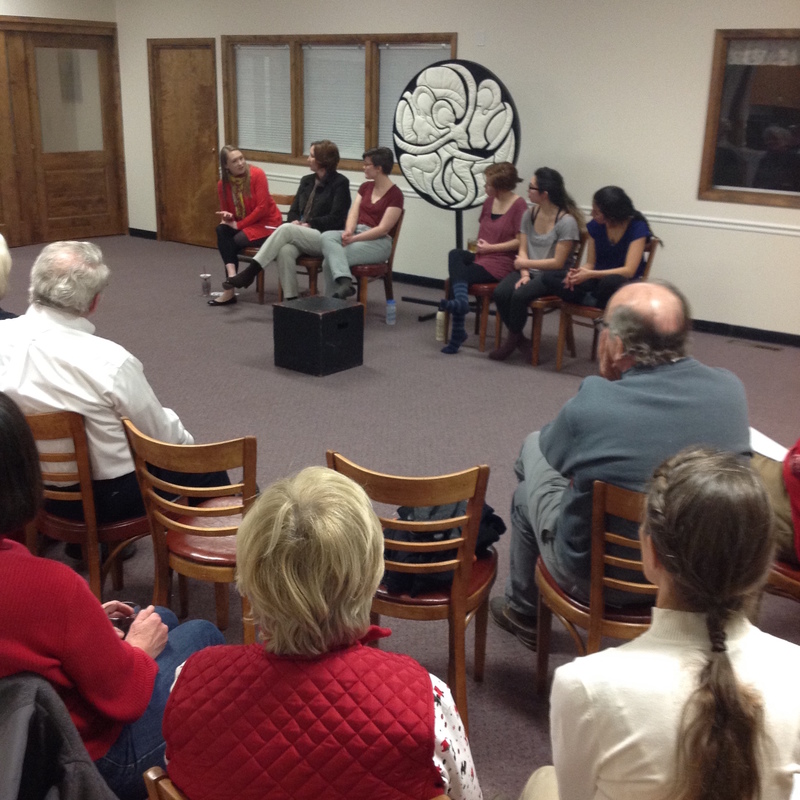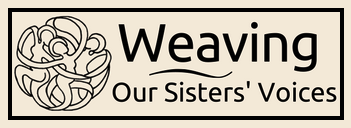Post-Show Discussions
After the 2015 production of Weaving Our Sister' Voices, an audience memeber related to us, “You know I don’t believe in these things, but this show was exactly what I needed to see today.” That is the intent - that there is an inclusivity even with the fact that there is religious content. An inclusivity of the universal themes of empowerment, strength, and courage, that break through any assumptions of religious affiliations.
When the student performers were asked how this show made them reflect on their spirituality, one responded:
"I like theatre and I was new to Gonzaga and I auditioned for either show because two were auditioning together. So then when I got cast in this show, I was like “okay, yea, hm, I got the bible one.” But I don’t really like the bible. But these stories of strength are universal and it has developed into a spirituality for me… I am so proud to have been a part of this production with these women."
- Annika Perez-Krikorian WSV 2015

The audience dialogues with the director, actors, and guest speaker from Abuse Recovery Ministry Services after the performance. Photo courtesy of Suzanne Ostersmith.
From the very first touring show, we began the tradition of post-show discussions after each performance. Being a shorter production (typically an hour) without intermission, continuing the Weaving Our Sisters' Voices experience with discussion seemed important and appropriate. Four our first tour, I limited the discussion to about 15 minutes. I had been to many theatre productions where the post show discussion went on and on until it petered out awkwardly because everyone was tired and wanted to go. I wanted to leave the audience wanting more discussion, so that hopefully they would turn to each other as they left the theatre and discussed what they had seen and what questions it brought up. In 2006, while I was confident this was the right approach, I was quite nervous about the vulnerable position I was putting myself and my cast into. It felt like I was setting my child out before others for them to discuss its merits. This choice to be vulnerable and open to the moment is scary, particularly with the subject matter of Weaving Our Sisters’ Voices. The Bible and its interpretations is a sensitive subject for some, and I didn’t want to get defensive of the theatrical choices we had made.
Linda Schearing was a part of many of the post show discussions, and that was always a relief for me to have her scholarly take. But sometimes, I was heading up these discussions on my own. To prepare, I formed questions that I could ask if the audience was slow to respond - it made me feel better to have prompts for our audience. At that point in my career, it was difficult for me to sit in silence, so I would jump in with a question if the audience was slower to raise a hand. Just as my style of direction and running rehearsals was to be prepared and efficient in the experience, for this early workshop production, I felt more comfortable ‘running’ the post show discussion. As I look back, I see that I was really using this time to further inform the audience about the process that we went through than to patiently honor the questions they had and the direction they wanted to take the discussion.
We also saw this as an opportunity to learn from other faiths and hear how it might relate to the way they tell these stories, or others from their scripture. We connected with the Spokane Interfaith Council and were directed to a number of leaders from various faiths (Jewish, Baha’i, Muslim and various Christian denominations). We all benefitted from these discussions. I remember our member of the Jewish faith talking about how all of these stories were also her faith’s stories, except for the Woman with the Hemorrhage. This was news to me! But of course, this is the story of the woman touching Jesus’ robes and being healed of her disease. She also spoke of how powerfully the story concluded with,
Surely he meant faith in him as healer, but maybe just maybe he also meant faith in myself.
(WSV Woman with a Hemorrhage)
The inclusivity with which Dr. Schearing writes that line is very important to me. The "Woman with a Hemorrhage" continues to be one of the stories that comes up the most in student papers and audience reflections.
Having an interfaith panel discuss the production was a beautiful time of enriching all of our perspectives as each faith had stories that they wanted to share after being inspired by the production. This led me to wonder if somehow we should have included many faiths stories. But when I posed the question, most felt this was authentic to the artists and yet left enough room for all to be inspired and engaged.
Our 2010 post-show discussions were focused mainly on the production team and Linda Schearing, but for the preview performance we had a very special discussion. In our 2006 production, we toured to many audience members who might not have made their way to Gonzaga for a theatre production and had a very personal way of relating to the stories. We didn’t want to lose that element for our 2010 run. So for the preview performance we arranged to bus in our audience from Transitions, a Spokane-based organization providing for women and children who are affected by poverty and homelessness.
It was a very wonderful night as the students were ready for an audience and this audience was thrilled to have an opportunity to go to the theatre on the Gonzaga campus. The post show discussion began slowly with a couple questions about how to memorize so many lines and how long we had been rehearsing, but then developed into some deeper reflections on the stories and their parallels to today. The audience seemed particularly grateful for the lines in Dr. Schearing’s script that connect to today.
For the 2015 production, with all the work we had done with American Sign Language and Religious Studies, capitalizing on my colleagues’ knowledge by bringing them in for the post show discussions provided a different set of enrichments to the experience. Plus, by then I had grown as an artist and leader and was more comfortable setting out some thoughts, holding space, and allowing our audience to dictate where the conversations went. It was powerful to observe myself mature with silence until someone felt inspired and ready to engage.
Suzanne Ostersmith
